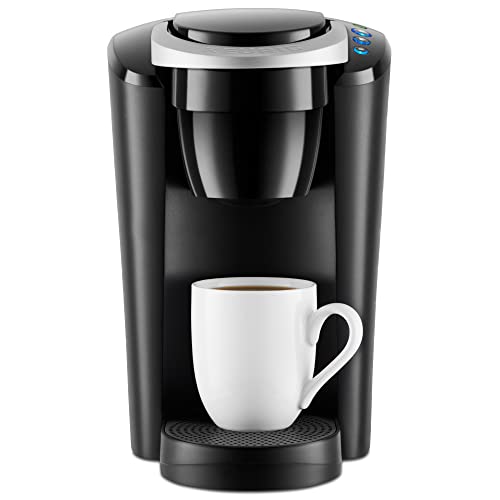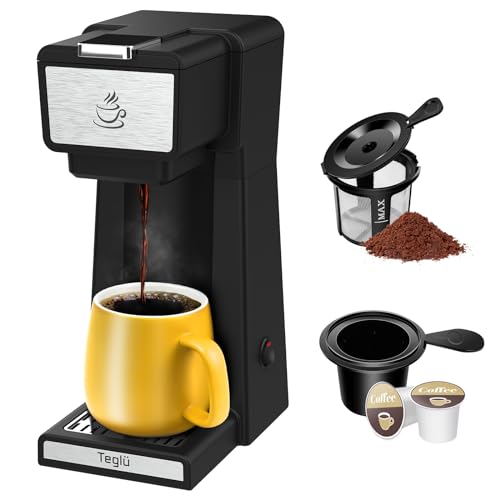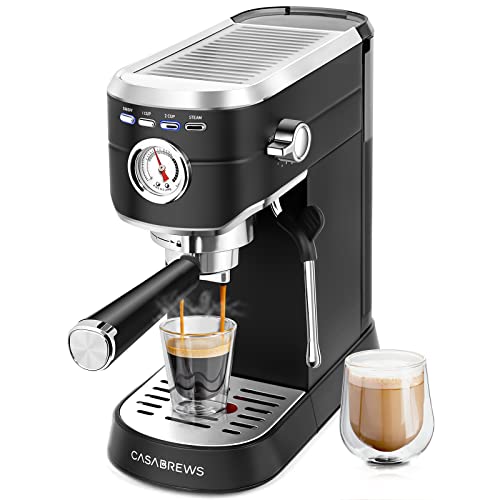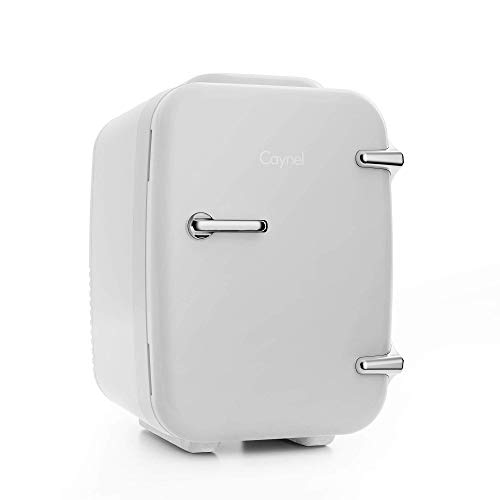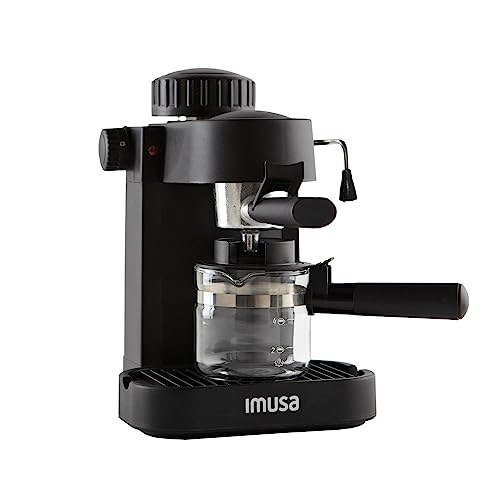- Is Sauvignon Blanc Sweet?
- What is Sauvignon Blanc? – About Grapes and Wine
- Factors Affecting the Sweetness of Sauvignon Blanc
- Factors to Consider When Choosing the Perfect Sauvignon Blanc
- How to Taste Sauvignon Blanc?
- Best Food Pairing Options with Sauvignon Blanc
- Best Way to Enjoy Sauvignon Blanc
- Tips to Serve Sauvignon Blanc
- How to Store Sauvignon Blanc?
- How Long Does Sauvignon Blanc Last?
- Calories and Sugar in Sauvignon Blanc
- Difference between Sauvignon Blanc, Pinot Grigio, Chardonnay, and Riesling
- Difference between Sauvignon Blanc and Cabernet Sauvignon
- FAQs for “Is Sauvignon Blanc Sweet?”
- Conclusion
Is Sauvignon Blanc Sweet?
Sauvignon Blanc is a white wine from France. On tasting, it seems to have a bit of a taste, which may lead some to think that Sauvignon Blanc is a sweet wine. However, the reality is not so. So, exactly, is Sauvignon Blanc sweet?
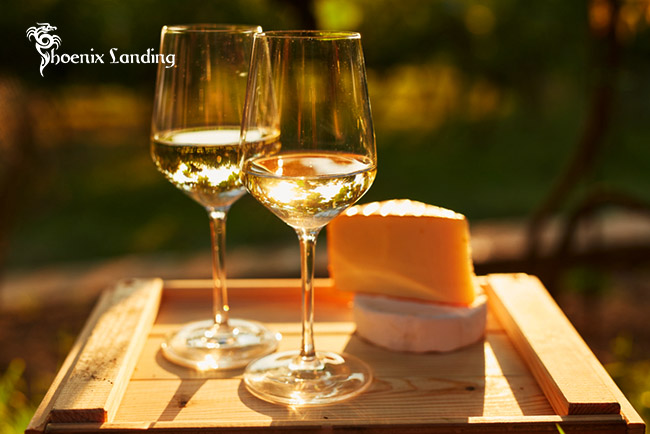
Traditionally, most wine drinkers know that Sauvignon Blanc is a dry white wine, but did you know that some versions can be quite sweet? In this blog post, we’ll answer “is Sauvignon Blanc sweet?“, explore the different types and styles of Sauvignon Blanc available today, and discuss why sweetness sometimes appears in this variety. We’ll also provide some tips for pairing Sauvignon Blanc with food. So if you’re curious about sweet Sauvignon Blancs, keep reading!
Is Sauvignon Blanc Sweet?
According to the majority, Sauvignon Blanc is not a sweet wine. Instead, it is a dry white wine with high acidity. The sweetness in Sauvignon Blanc comes from the grape itself and no added sugar. Sauvignon Blanc has a light, refreshing taste with hints of citrus and tropical fruits.
However, wide varieties of Sauvignon Blanc are on the market today with a sweet taste. So the answer doesn’t have to be based on the masses. Sauvignon Blanc is a dry or sweet-tasting wine.
What is Sauvignon Blanc? – About Grapes and Wine
Sauvignon Blanc is a white wine grape from France’s Bordeaux region. The name Sauvignon Blanc comes from the French words “Sauvage” (wild) and “blanc” (white), which refers to the grape’s wild, untamed origins. Sauvignon Blanc is planted in many regions worldwide, including California, New Zealand, Chile, South Africa, and Australia.
Speaking of Australia, the Australian wine industry is world famous, and Australian wine is produced in all states of the country. With its sunny climate and diverse soils, Australia is able to produce a wide variety of wines, ranging from white wines to red wines, and even sparkling wines.
The Australian wine industry has come a long way since its early days, when only a handful of wineries existed in the country. Today, there are more than 60 major wineries in Australia, and the industry employs over 10,000 people. In addition to being a major producer of wine, Australia is also home to some of the world’s most prestigious wine shows, such as the Sydney Royal Wine Show and the Perth Royal Wine Show. Australian wine is also exported to many countries around the world, including the United States, Canada, and China.
There are many different kinds of grapes used to make wine, but only certain types of grapes can be used to make specific styles of wine. For example, Cabernet Sauvignon grapes are used to make red wine, while Chardonnay grapes are used to make white wine.
Sauvignon Blanc grapes are small and round with a thin skin. The pulp of the grape is greenish-white in color with a high acidity level. Sauvignon Blanc wines are known for their crisp, refreshing taste with aromas of citrus fruits, green bell peppers, and gooseberries.
Regarding white wine, Sauvignon Blanc is one of the most popular and well-known varieties. It’s a versatile wine that can be enjoyed on its own or paired with food, and it offers a wide range of flavors and aromas that make it interesting and enjoyable to drink. If you’re curious about Sauvignon Blanc and what makes it so special, here are some of the most important characteristics to know about this variety.
There are two main types of Sauvignon Blanc: dry and sweet. Dry Sauvignon Blanc wines are the most common type on the market today. These wines are light in body with high acidity and a crisp, clean taste. Sweet Sauvignon Blancs are less common, but they do exist. These wines are typically made using grapes that have been affected by noble rot (a fungus that affects grape vines). Noble rot causes the grapes to shrivel up, which concentrates the sugar content in the grape. Sweet Sauvignon Blancs are typically dessert wines with a rich, sweet taste and aromas of honey and stone fruits.
When it comes to flavor, Sauvignon Blanc offers a wide range. The most common flavors include citrus, green apple, and white peach, but there is also the potential for more complex aromas and flavors depending on where the grapes are grown and how they are processed. Sauvignon Blanc wines from cooler climates tend to be more delicate, while those from warmer climates can be more full-bodied.
One of the most important things about Sauvignon Blanc is that it is best enjoyed young. This variety does not age well, so it’s best to drink it within a year or two of bottled. If you choose to age Sauvignon Blanc, it’s important to preserve its freshness and flavour in a cool, dark place.
Overall, Sauvignon Blanc is a delicious and versatile white wine that can be enjoyed in many different ways. Sauvignon Blanc is a great option if you’re looking for a refreshing and crisp wine to drink on its own or pair with food. However, remember that this variety doesn’t age well, so it’s best to drink it young. Also, store it in a cool, dark place to preserve its freshness and flavor.
Did you know?
Did you know, Sauvignon Blanc also has a date dedicated to it?
Every year on the first Friday of May, people from all over the world celebrate International Sauvignon Blanc Day. How did this come about? In 2010, a group ofwine producers from New Zealand’s Marlborough region decided that their Sauvignon Blanc deserved its own special day. And so, with the help of social media, they created a global celebration which has now become an annual event.
So whether you enjoy a glass of Sauvignon Blanc on its own or paired with food, make sure you raise a glass on May 4th in celebration of this delicious wine!
Factors Affecting the Sweetness of Sauvignon Blanc
So you already know the answer to “is Sauvignon Blanc sweet”, have you ever wondered what affects the sweetness of Sauvignon Blanc? Let’s find out now. Sauvignon Blanc is a white wine grape variety that originates from the Bordeaux region of France. The grape is known for its signature green flavor and crisp acidity. But what makes Sauvignon Blanc so unique is its ability to produce wines with a wide range of sweetness levels. Here are some of the factors that affect the sweetness of Sauvignon Blanc:
1. Climate
The climate plays a big role in determining the sweetness of Sauvignon Blanc. In cooler climates, the grape produces more tart and acidic wines. However, in warmer climates, the grape produces more ripe and fruity wines. This is because the grape gets more sun exposure in warmer climates, which causes it to ripen more.
2. Sugar Content
The sugar content of the grape also affects the sweetness of Sauvignon Blanc. The more sugar the grape has, the sweeter the wine will be. However, the sugar content can be affected by weather and viticulture practices. For example, if the weather is cooler during the growing season, the grape will have less sugar and produce a more tart and acidic wine.
3. Winemaking Practices
Winemaking practices can also affect the sweetness of Sauvignon Blanc. For example, if the wine is made in a dry style, it will be less sweet than a wine made in a sweet style. This is because the sugar in the grape is not fully fermented, leaving behind residual sugar.
4. Age
Age also plays a role in the sweetness of Sauvignon Blanc. Younger wines are more tart and acidic, while older wines are more ripe and fruity. This is because the grape gets more sun exposure as it ages, which causes it to ripen more.
5. Serving Temperature
The serving temperature of Sauvignon Blanc can also affect its sweetness. If the wine is served too cold, it will taste more tart and acidic. However, if the wine is served too warm, it will taste more ripe and fruity. The ideal serving temperature for Sauvignon Blanc is between 45-50 degrees Fahrenheit.
These are just a few of the many factors that affect the sweetness of Sauvignon Blanc. So, when you’re trying a new bottle of Sauvignon Blanc, be sure to take these factors into account. And don’t forget to serve it at the ideal temperature for the best flavor.
Factors to Consider When Choosing the Perfect Sauvignon Blanc
Sauvignon Blanc is a dry white wine with refreshing acidity. It has a fruity flavor with green notes. The grape is native to the Bordeaux region of France. Sauvignon Blanc wines are made in different styles, from light and crisp to rich and full-bodied.
When choosing a Sauvignon Blanc, there are several factors to consider, such as the style of wine, the food pairing, and the occasion.
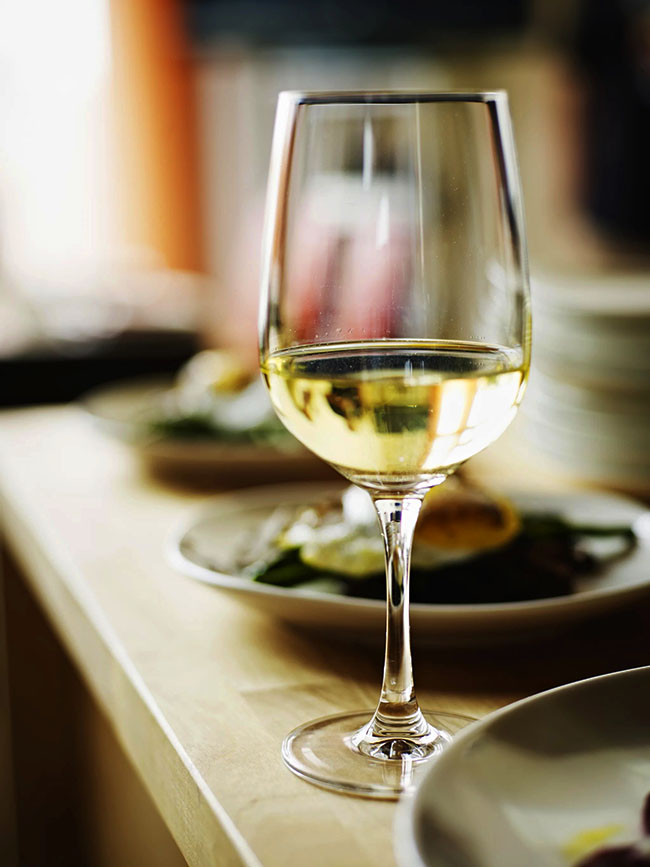
1. Style of Wine
The style of Sauvignon Blanc you choose should match your personal preference. If you like bold flavors, then opt for a fuller-bodied wine. If you prefer a lighter wine, then go for a crisper style.
2. Food Pairing
Sauvignon Blanc is a versatile wine that pairs well with many different types of food. It goes well with seafood, poultry, and salads. If you are serving Sauvignon Blanc with a meal, make sure to choose a wine that will complement the flavors of the food.
3. Occasion
The occasion you are serving Sauvignon Blanc will also dictate which wine you choose. A light and crisp wine will be ideal if you host a casual gathering. But if you are hosting a formal dinner party, opt for a richer and more full-bodied wine.
4. Price
When it comes to price, Sauvignon Blanc ranges from affordable to expensive. The wine’s price depends on the grape’s quality, the region where it is grown, and the winemaking process.
5. Personal Preference
The best Sauvignon Blanc is the one you like the best. Trust your palate and choose a wine that you enjoy drinking.
These are just a few factors to consider when choosing Sauvignon Blanc. Keep these tips in mind when shopping for this dry white wine. And don’t forget to serve it at the ideal temperature for the best flavor.
How to Taste Sauvignon Blanc?
Dry is the answer to “is Sauvignon Blanc sweet?”. So, how to taste Sauvignon Blanc? You know what, if not, the answer is right below. When it comes to wine tasting, you should keep a few basic things in mind to get the most out of your experience:
- Look at the wine before pouring it into your glass. You should be able to see its color and clarity. This will give you an idea of what the wine will taste like.
- Smell the wine. This is where you’ll get most of your information about the flavor of the wine.
- Take a small sip and let it roll around your mouth before swallowing.
Pay attention to the flavors and textures that you’re experiencing. With these tips in mind, let’s take a closer look at how to taste Sauvignon Blanc.
When it comes to Sauvignon Blanc, you’ll want to pay attention to the citrusy aromas. This wine is known for its zesty, fresh flavors. You may also notice some tropical fruit notes, such as pineapple or grapefruit. On the palate, Sauvignon Blanc is typically light-bodied with high acidity. The flavors are usually fairly simple, but they can be quite refreshing.
If you’re new to wine tasting or just looking to brush up on your skills, there’s no need to worry. Tasting Sauvignon Blanc is a great way to get started. Remember to take your time, pay attention to the senses, and enjoy the experience. Cheers!
Best Food Pairing Options with Sauvignon Blanc
Regarding food and wine pairings, few wines are as versatile as Sauvignon Blanc. This dry white wine can be enjoyed with a wide variety of dishes, from light seafood fare to heartier meats and vegetables.
Here are some of the best foods to enjoy with Sauvignon Blanc:
Seafood: Seafood is one of the classic pairings for Sauvignon Blanc. The wine’s mineral and citrus notes complement shellfish and fish dishes perfectly. Try pairing Sauvignon Blanc with shrimp, scallops, or grilled fish.
Vegetables: Vegetables can be a great option for pairing with Sauvignon Blanc. The wine’s acidity helps to cut through the richness of roasted or grilled vegetables. Try pairing Sauvignon Blanc with roasted Brussels sprouts, grilled eggplant, or roasted potatoes.
Chicken: Chicken is another great option for pairing with Sauvignon Blanc. The wine’s acidity and minerality can help balance the chicken dishes’ richness. Try pairing Sauvignon Blanc with roasted chicken, grilled chicken, or chicken curry.
Pork: Pork is a delicious option for pairing with Sauvignon Blanc. The wine’s acidity and minerality can help to cut through the richness of pork dishes. Try pairing Sauvignon Blanc with roasted pork, grilled pork, or pork loin.
Beef: Beef is a great option for pairing with Sauvignon Blanc. The wine’s acidity and minerality can help balance beef dishes’ richness. Try pairing Sauvignon Blanc with roasted beef, grilled beef, or steak au poivre.
Duck: Duck is an excellent option for pairing with Sauvignon Blanc. The wine’s acidity and minerality can help to cut through the richness of duck dishes. Try pairing Sauvignon Blanc with roasted duck, grilled duck, or confit de canard.
Cheese: Cheese is a great option for pairing with Sauvignon Blanc. The wine’s acidity can help to balance out the richness of cheese dishes. Try pairing Sauvignon Blanc with goat cheese, sheep’s milk, or blue cheese.
Fruit: Fruit is a great option for pairing with Sauvignon Blanc. The wine’s acidity can help balance the sweetness of fruit dishes. Try pairing Sauvignon Blanc with grilled peaches, poached pears, or roasted figs.
Dessert: A dessert is a great option for pairing with Sauvignon Blanc. The wine’s acidity can help balance the sweetness of dessert dishes. Try pairing Sauvignon Blanc with crème brûlée, apple tarte Tatin, or poached apricots.
Best Way to Enjoy Sauvignon Blanc
Sauvignon blanc is a refreshing white wine that can be enjoyed on its own or paired with food. When choosing a sauvignon blanc, look for one with bright acidity and fresh, fruity flavors. Serve sauvignon blanc chilled and enjoy it within a year of purchase.
There are many ways to enjoy sauvignon blanc. It can be served as an aperitif or paired with light appetizers such as cheese or fruit. Sauvignon blanc also pairs well with fish, poultry, and salads. Finally, pair it with grilled vegetables or roasted chicken for a heartier meal.

When shopping for sauvignon blanc, look for wines from New Zealand or Chile. These regions produce bright, fruit-forward wines that are perfect for summer sipping. If you’re looking for a budget-friendly option, look for Chilean wines. For something special, splurge on a bottle of New Zealand sauvignon blanc.
Serve sauvignon blanc chilled in white wine glasses. If you’re serving it as an aperitif, pour it into flute glasses. When pairing sauvignon blanc with food, choose a glass that will enhance the dish’s flavors. For example, pair it with a light salad in a white wine glass or grilled chicken in a red wine glass.
Another way to enjoy sauvignon blanc is to drink it within a year of purchase. This will allow you to enjoy the wine at its peak flavor. Store unopened bottles of sauvignon blanc in a cool, dark place. Once opened, transfer the wine to a decanter or pitcher and consume it within three days.
Sauvignon blanc is a versatile white wine that can be enjoyed on its own or paired with food. When choosing a sauvignon blanc, look for one with bright acidity and fresh, fruity flavors. Serve sauvignon blanc chilled and enjoy it within a year of purchase. There are many ways to enjoy sauvignon blanc, so experiment and find what you like best! So you know “is Sauvignon Blanc sweet or dry?” and how to enjoy them. You can prepare for the next party perfectly!
Tips to Serve Sauvignon Blanc
Sauvignon Blanc is a dry white wine with refreshing acidity. It has a fruity flavor with green notes. The grape is native to the Bordeaux region of France. Sauvignon Blanc wines are made in different styles, from light and crisp to rich and full-bodied.
When it comes to serving Sauvignon Blanc, you should keep a few things in mind, such as the ideal serving temperature and food pairing suggestions.
1. Serving Temperature
The ideal serving temperature for Sauvignon Blanc is between 45-50 degrees Fahrenheit. So, make sure to chill the wine before serving it.
2. Food Pairing
Sauvignon Blanc is a versatile wine that pairs well with many different types of food. It goes well with seafood, poultry, and salads. If you are serving Sauvignon Blanc with a meal, make sure to choose a wine that will complement the flavors of the food.
3. Serving Glassware
Regarding Glassware, Sauvignon Blanc is best served in a white wine glass. The shape of the glass helps to bring out the aromas and flavors of the wine.
4. Decanting
If you are serving an aged Sauvignon Blanc, you may want to decant the wine before serving it. Decanting helps to separate the wine from the sediment.
5. Storage
Sauvignon Blanc is best enjoyed within a year of being bottled. So, if you have a bottle of Sauvignon Blanc that is more than a year old, you may want to consider drinking it sooner rather than later.
Remember these serving tips next time you open a bottle of Sauvignon Blanc. By following these tips, you can ensure that your wine is served at its best.
How to Store Sauvignon Blanc?
If you were wondering is Sauvignon Blanc sweet then you are probably also interested in this wine. So, when you buy it, you must know how to take care of it. That’s why you’re reading this. Sauvignon Blanc is a dry white wine with refreshing acidity. It has a fruity flavor with green notes. The grape is native to the Bordeaux region of France. Sauvignon Blanc wines are made in different styles, from light and crisp to rich and full-bodied.
Sauvignon Blanc should be stored in a cool, dark place. The ideal temperature for storing Sauvignon Blanc is 55-60 degrees Fahrenheit. The wine should also be stored in a humidity-controlled environment.
If you are going to drink the wine within a year of purchase, then you can store it in your kitchen cabinet. But if you plan to age the wine, you should store it in a wine cellar or fridge.
When it comes to storage, Sauvignon Blanc is a versatile wine. It can be stored in different ways, depending on your personal preference. Just make sure to store the wine in a cool, dark place. And don’t forget to serve it at the ideal temperature for the best flavor.
How Long Does Sauvignon Blanc Last?
Sauvignon Blanc is a dry white wine with refreshing acidity. It has a fruity flavor with green notes. The grape is native to the Bordeaux region of France. Sauvignon Blanc wines are made in different styles, from light and crisp to rich and full-bodied.
When it comes to shelf life, Sauvignon Blanc is a versatile wine. It can last anywhere from a few months to a few years. The shelf life of Sauvignon Blanc depends on the style of wine, the storage conditions, and the level of acidity.
If you are going to drink the wine within a year of purchase, then you can store it in your kitchen cabinet. But if you plan to age the wine, you should store it in a wine cellar or fridge.
When it comes to shelf life, Sauvignon Blanc is a versatile wine. It can last anywhere from a few months to a few years. Just make sure to store the wine in a cool, dark place. And don’t forget to serve it at the ideal temperature for the best flavor.
Calories and Sugar in Sauvignon Blanc
For the article “Is Sauvignon Blanc Sweet?” add meaning. We decided to add this section to the article to give you a more general overview of this wine. How many calories and grams of sugar are in Sauvignon Blanc wine? A 5-ounce glass of Sauvignon Blanc has about 121 calories and 3.82 grams of sugar. Most calories (96%) come from alcohol, while the rest come from carbohydrates.
Sauvignon Blanc is a dry white wine with very little sugar. The average glass of Sauvignon Blanc has less than 1 gram of sugar. So if you’re watching your sugar intake, this is a good choice of wine.
As for calories, Sauvignon Blanc is on the lower end as well. However, red wine generally has more calories than a glass of white wine, so if you’re trying to cut back on calories, Sauvignon Blanc is a good option.
Sauvignon Blanc is a great choice if you’re looking for a low-calorie, low-sugar wine. It’s also a refreshing and versatile wine that pairs well with many different types of food. So go ahead and enjoy a glass of Sauvignon Blanc guilt-free!
Difference between Sauvignon Blanc, Pinot Grigio, Chardonnay, and Riesling
There are so many different types to choose from when it comes to white wine. But how do you know which one is right for you? Sauvignon Blanc is a good choice if you’re looking for a light and refreshing wine. However, if you prefer a richer and more full-bodied wine, Chardonnay might be more up your alley.
Here’s a quick rundown of the differences between Sauvignon Blanc, Pinot Grigio, Chardonnay, and Riesling:
Sauvignon Blanc: Sauvignon Blanc is a dry white wine with refreshing acidity. It has a fruity flavor with green notes. The grape is native to the Bordeaux region of France. Sauvignon Blanc wines are made in different styles, from light and crisp to rich and full-bodied.
Pinot Grigio: Pinot Grigio is a dry white wine with a light body and refreshing acidity. It has aromas of citrus and floral notes. The grape is native to the Burgundy region of France. Pinot Grigio wines are typically lighter in style with less alcohol.
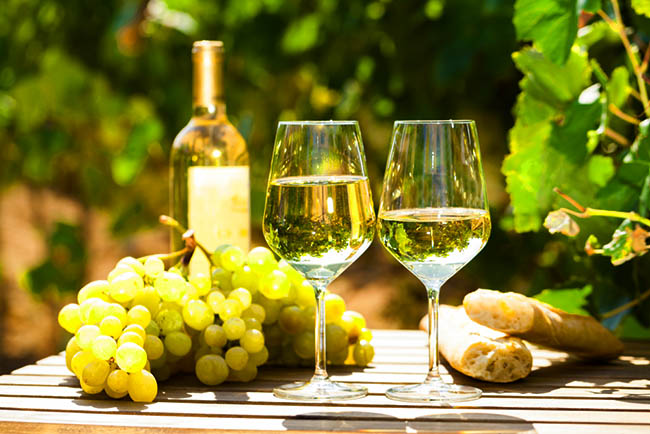
Chardonnay: Chardonnay is a dry white wine with a full body and creamy texture. It has aromas of tropical fruits, butter, and oak. The grape is native to the Burgundy region of France. Chardonnay wines can be made in different styles, from light and crisp to rich and full-bodied.
Riesling: Riesling is a white wine with a fruity sweetness and high acidity. It has aromas of floral and citrus notes. The grape is native to the Rhine region of Germany. Riesling wines can be made in different styles, from dry to sweet.
So, what’s the difference between Sauvignon Blanc, Pinot Grigio, Chardonnay, and Riesling? Sauvignon Blanc is a good choice if you’re looking for a refreshing and light wine. On the other hand, if you prefer a richer and more full-bodied wine, then Chardonnay might be more up your alley. And if you’re looking for a sweet wine, then Riesling is a good option.
Whatever your preference, there’s a white wine out there that’s perfect for you. So go ahead and explore the different types of white wine until you find your new favorite!
Difference between Sauvignon Blanc and Cabernet Sauvignon
Sauvignon Blanc and Cabernet Sauvignon are two of the most popular types of wine. But what’s the difference between them?
Sauvignon Blanc is a dry white wine with refreshing acidity. It has a fruity flavor with green notes. The grape is native to the Bordeaux region of France. Sauvignon Blanc wines are made in different styles, from light and crisp to rich and full-bodied.
Cabernet Sauvignon is a dry red wine with firm tannins and high acidity. It has aromas of dark fruits, oak, and spices. The grape is native to the Bordeaux region of France. Cabernet Sauvignon wines are typically full-bodied with high alcohol content.
So, what’s the difference between Sauvignon Blanc and Cabernet Sauvignon? Sauvignon Blanc is a good choice if you’re looking for a refreshing and light wine. On the other hand, Cabernet Sauvignon might be more up your alley if you prefer a richer and more full-bodied wine.
Whatever your preference, there’s a wine out there that’s perfect for you. So go ahead and explore the different types of wine until you find your new favorite!
FAQs for “Is Sauvignon Blanc Sweet?”
Is Sauvignon Blanc or Pinot Grigio Sweeter?
Sauvignon Blanc is a dry white wine, while Pinot Grigio is a dry white wine with a light body and refreshing acidity. The grape is native to the Burgundy region of France. Pinot Grigio wines are typically lighter in style with less alcohol.
How do I Know If a Sauvignon Blanc is Sweet or Dry?
If you’re unsure whether a particular Sauvignon Blanc is sweet or dry, the best way to find out is to taste it simply! Pay attention to the sweetness level of the wine and see how it fits on your own personal scale. Some people prefer their white wines to be very dry, while others enjoy a bit of sweetness. There is no right or wrong answer here – it’s all about what you enjoy.
Is Sauvignon Blanc Low in Sugar?
Yes, Sauvignon Blanc is a dry white wine with a light body and refreshing acidity. It has aromas of citrus and floral notes. The grape is native to the Burgundy region of France. Pinot Grigio wines are typically lighter in style with less alcohol.
Is Sauvignon Blanc Gluten Free?
Yes, Sauvignon Blanc is a dry white wine that is naturally gluten-free. The grape is native to the Burgundy region of France. Pinot Grigio wines are typically lighter in style with less alcohol.
When Should I Drink Sauvignon Blanc?
Sauvignon Blanc is a versatile wine that can be enjoyed year-round. It’s a great choice for summertime sipping, but can also be enjoyed in the winter months. If you’re looking for a particular food pairing, Sauvignon Blanc pairs well with seafood, salads, and goat cheese.
What is Sweeter, a Chardonnay or Sauvignon Blanc?
Sauvignon Blanc is a dry white wine with a light body and refreshing acidity. It has aromas of citrus and floral notes. The grape is native to the Burgundy region of France. Pinot Grigio wines are typically lighter in style with less alcohol. Chardonnay is a dry white wine that is full-bodied with a creamy texture. It has aromas of oak, butter, and tropical fruits. The grape is native to the Burgundy region of France. Chardonnay wines can be made in different styles, from light and crisp to rich and buttery. When it comes to sweetness, both Sauvignon Blanc and Chardonnay can range from dry to sweet. Ultimately, it all comes down to personal preference.
Conclusion
We have finished reading the article “Is Sauvignon Blanc Sweet?“. Sauvignon Blanc is a dry white wine from the Bordeaux region of France. It can be made in various styles but typically has grassy or herbal aromas and flavors. While it pairs well with seafood, chicken, and pork dishes, sauvignon blanc can also be enjoyed on its own as an aperitif or after-dinner drink.
If you haven’t had the opportunity to try this delicious varietal yet, we recommend grabbing a bottle the next time you’re at your local liquor store or grocery store. Remember to pay attention to the tips above to be able to choose the best Sauvignon Blanc. Along with the best way to serve and enjoy, take advantage of the information in this article. Come to PhoenixLandingBar for more cool things. Thanks for reading!
